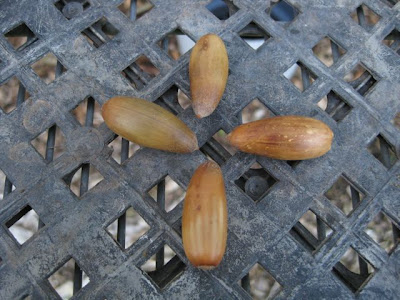It's been a "mast" year for acorn-producing oak trees. Acorns falling from the oaks are more numerous than in typical years. This fall is a great opportunity for gardeners with room for big trees to grab a bucket and start gathering.
Acorns can be collected from the ground or harvested from oak trees, by shaking a branch with a pole. Generally, the healthiest acorns are those that are picked from trees.
Take the caps off the acorns and put the acorns in a bucket of water overnight. Keep only those that sink to the bottom. The floaters are probably damaged by insects or squirrels.
At this point you can either plant the acorns directly into their permanent garden home, into one gallon or larger containers in a planting mix or store them for up to six months in a cool, dry place, wrapped in a bag with peat moss. A refrigerator is ideal.
Planting acorns directly into the yard now is best. Oaks quickly develop long tap roots; if allowed to remain too long in a container, the roots will quickly grow out the bottom of the pot. At transplanting time, these seedlings may die off if the roots are cut off. If you're starting oaks in containers, transplant them as soon as you see the first fully developed set of leaves.
All oaks like full sun; choose a planting area that also has good drainage. If planting acorns in the ground, loosen a wide area a few inches deep. Then plant the acorn either with the tip pointed down or sideways, about an inch deep.
If planted now, normal fall and winter rains may be all the water that acorn seedling needs to get off to a good start. Water the new tree deeply but sparingly during the dry season, perhaps once every two weeks.





No comments:
Post a Comment